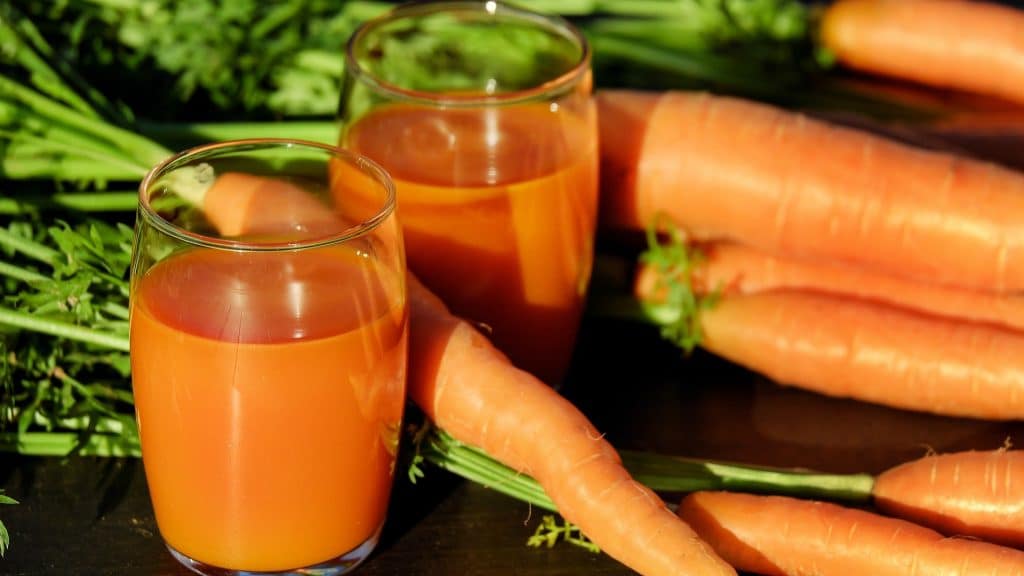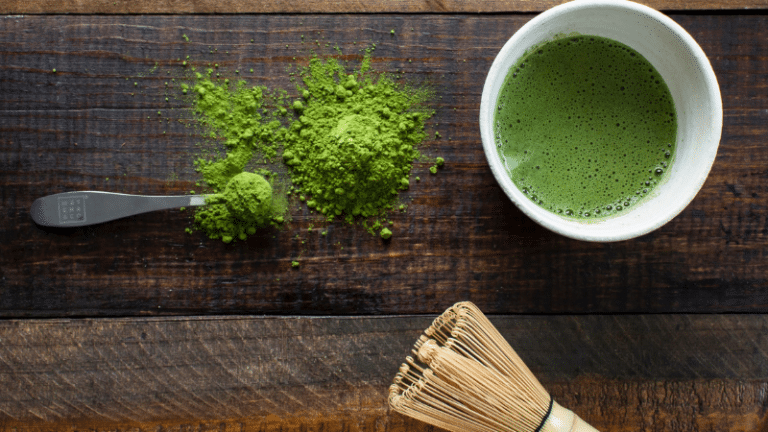28 Vitamin A Foods That Will Boost Your Health in 2024

Like all the other vitamins, vitamin A plays a crucial role in the normal growth and development of the body. There are a number of vitamin A foods, and a balanced diet can provide us with a sufficient amount of this vitamin. However, some people have to take supplements for various medical reasons. Also, it’s not recommended to take too much vitamin A as this can lead to some severe medical conditions. We have prepared some interesting data on vitamin A, so let’s dive in.
What Is Vitamin A?
Vitamin A is an umbrella term for a group of oil-soluble compounds essential for the proper functioning of your eyes, skin, reproductive system, and many other processes in your body. It comes in two different forms—preformed vitamin A and provitamin A.
Preformed vitamin A includes retinol, retinal, and retinoic acid, and some of the foods that contain retinol are animal products. The body doesn’t have to convert this type of vitamin A before it uses it, and that’s why it’s also called the active form of vitamin A.
Provitamin A, on the other hand, has to be converted to active vitamin A once it is found in the body. It includes specific carotenoids found in fruits and vegetables, among which beta-carotene is the most important one.
What Is Vitamin A Good For?
It’s vital to consume enough foods rich in this vitamin as it affects many organs and systems in your body.
First, many people turn to vitamin A foods for eye health. Notably, the vitamin can prevent night blindness since it plays a significant role in converting light into electrical signals. People with this eyesight problem have difficulty adjusting to dim light, while their vision is not impaired when there is enough light. Also, beta-carotene lowers the risk of developing age-related macular degeneration.
Another vitamin A function is maintaining a healthy immune system. Since it stimulates the production of white blood cells responsible for fighting viruses, bacteria, and other foreign invaders, it can help your body resist infections. In line with this, recent studies have shown that vitamin A can reduce the risk of dying from measles.
Now, when it comes to the skin, what cannot be downplayed is the impact of vitamin A. Acne, for instance, could be reduced with its help. On top of that, there is beta-carotene, a potent antioxidant that can protect your skin from UV damage and slow down the signs of aging. In addition to eating foods containing this compound, you can use creams with retinol or retinoic acid.
So, what does topical vitamin A do for your skin? It can fill in your fine lines and smoothen your skin as it stimulates collagen production. Vitamin A is also used to treat severe acne, although it is still unclear how it lowers the risk of developing this skin condition.
According to several studies on reproduction, vitamin A is vital for the reproductive system of both men and women, as well as for the normal development of embryos. Other vitamin A benefits include maintaining healthy bones and lowering the risk of certain types of cancer. According to some studies, one derivative of vitamin A, retinoic acid, regulates blood sugar levels in mice.
Vitamin A Foods
As we already mentioned, there are two types of vitamin A, and they can be found in different kinds of food. Some of the food with vitamin A are animal products containing preformed vitamin A or retinol.
Interestingly, provitamin A carotenoids, which are transformed into vitamin A through metabolic processes, are actually the pigments that make vitamin A fruits and vegetables orange.
Considering all the health benefits of this vitamin, it’s of great importance to include the following foods in your diet. Let’s see what foods could supply you with much-needed vitamin A.
Beef Liver
If you love eating fish and you have been wondering what foods are high in vitamin A, you’re in the right place. Since retinol is stored in the liver, this is the number one food for your source of this healthy nutrient. Three ounces of this meat pack a whopping 444% of the vitamin’s DV, making beef liver one of the valuable retinol foods. Beef liver is also an excellent source of B vitamins, like biotin and riboflavin.
Lamb Liver
Another notable addition to the retinol-rich foods is the lamb liver, providing a great amount of vitamin A. In fact, an 85-gram serving offers approximately 21,202 IU of vitamin A, 65 micrograms of vitamin B12, and 3.4 milligrams of riboflavin. On top of that, you get many other benefits like red blood cell formation and healthy brain function.
Cod Liver Oil
Fish oils are foods that contain vitamin A in high concentration. In other words, one hundred grams of cod liver oil provides you with 100,000 IU of vitamin A. What’s more, cod liver oil helps reduce inflammation, improve bone health, support eye health, and reduce joint pain.
Herring
Fatty fish such as herring are great retinol food sources. Three ounces of this type of fish serve about 24% of the vitamin A’s DV. Moreover, it is rich in omega-3, selenium, and vitamin D. Note that omega-3s help regulate the heartbeat.
Salmon
Red salmon is yet another type of fish that belongs to foods with vitamin A. However, three ounces of this delicious fish will provide you with only 50 IU of vitamin A, which is about 1% of this vitamin’s DV. Salmon is also a source of B vitamins, including thiamine, vitamin B5, vitamin B6, and vitamin B12.
Bluefin Tuna
This fish has been placed among retinol foods for a good reason. As little as 100 grams of the fish lands you 24% of the vitamin’s DV. On top of that, bluefin tuna hoards many other beneficial compounds such as selenium, thiamin, protein, omega-3 fatty acids, and vitamin B6.
Milk
Milk is usually fortified with vitamin A, so it’s one of the leading vitamin A food sources. A cup of skim milk will meet 15% of the vitamin A’s DV. Of course, milk and dairy products are also valuable sources of vitamin D.
Cheddar Cheese
Other dairy products such as cheese are also great vitamin A sources. A cup of shredded cheddar cheese delivers 1,132.3 IU of vitamin A. If you prefer diced cheese, one cup will provide you with 1,322.6 IU of vitamin A, while a cup of melted cheddar will give you 2,444.9 IU of this vitamin.
Egg
It’s safe to say that egg yolks belong to the group of retinol-containing foods. One large hard-boiled egg will add up to 260 IU of vitamin A, or 5% of the vitamin’s DV. What’s more, eggs are rich in the antioxidants lutein and zeaxanthin, which are crucial for eye health.
Sweet Potatoes
If you don’t eat meat, there are numerous vitamin A-rich foods vegetarians can add to their daily menu. For example, sweet potatoes are a fantastic option as you can get 561% of the vitamin A’s DV with only one potato baked in skin. In addition, they are rich in vitamins C and B6, potassium, fiber, and niacin.
Carrots
Now, let’s look at more vitamin A-enriched food that is suitable for vegans. Generally speaking, most orange vegetables are packed with beta-carotene, and carrots are not an exception. For instance, half a cup of raw carrots offers 184% of this vitamin’s DV.
Peppers
Not only are peppers loaded with vitamin C, but they are also vitamin A-rich foods. If you eat just half a cup of raw red peppers, you will cover 47% of the vitamin’s DV. What’s more, red peppers are also good for your overall vision and eye health.
Butternut Squash
As for winter squash, vitamin A foods couldn’t ask for a more valuable addition. Astoundingly, one cup of cooked butternut squash offers 457% of the vitamin’s RDI. In addition, it is rich in vitamin C, fiber, and potassium. In other words, it provides numerous health benefits, like lowering blood pressure and reducing the risk of heart disease.
Pumpkins
If you have ever searched what foods contain retinol, there is a high likelihood you saw pumpkins in the results. Pumpkins can be prepared in many delicious ways, and it’s good to know that a cup of pumpkin cubes will provide you with 197% of the vitamin A’s DV. And if you decide to treat yourself to a piece of pumpkin pie, you will receive an impressive 3,434 IU of vitamin A. As for the retinol activity equivalents, you will get 706 micrograms with every cup of cooked pumpkin.
Spinach
These leafy green veggies are also among the vegetables with vitamin A. Half a cup of boiled spinach offers 64% of the vitamin’s DV. Additionally, spinach is a source of inorganic nitrate that lowers the risk of heart disease. It can also lower your blood pressure and make your arteries less stiff.
Kale
Kale is yet another valuable addition to vitamin A vegetables. A cup of this healthy veggie offers 206% of this vitamin’s DV. Not to mention that it is loaded with vitamin K, calcium, vitamin B, and potassium. Some of its health benefits involve bone health and a strong immune system.
Broccoli
But the vitamin A vegetables list doesn’t end there. Half a cup of boiled broccoli will provide you with 24% of the vitamin A’s DV. Moreover, this veggie is rich in vitamins C and K, iron, and fiber.
Black-Eyed Peas
Legumes like beans and peas are foods rich in vitamin A. For example, a cup of boiled black-eyed peas or cowpeas gives you approximately 7% of the vitamin’s DV. In addition, black-eyed peas are helpful with anemia and heart health.
Beans
Sourcing vitamin A from food shouldn’t pose a challenge. A serving of uncooked green beans covers 5% of this vitamin’s DV. What’s more, these vegetables are a great source of vitamin B6, protein, iron, magnesium, and potassium. Overall, beans are good for supporting heart health, controlling appetite, preventing fatty liver, etc.
Tomatoes
Any vitamin A foods list wouldn’t be complete without tomatoes. A ¾ cup of tomato juice will help you reach 5% of the vitamin A’s DV. Tomatoes are also high in vitamin E, as well as vitamin C, magnesium, and potassium.
Cantaloupe
Cantaloupe is a well-known vitamin A fruit, also packed with vitamin C. You will get 106% of the vitamin’s DV with a one-cup serving of cantaloupe. What’s more, consuming cantaloupe keeps your bones, eyes, skin, and immune system healthy. It is also beneficial for your muscles, blood pressure, and heart.
Mangoes
Mangoes belong to vitamin A-rich fruits as one whole mango covers 12% of this vitamin’s DV. These fruits are also high in vitamin C, so they can really boost your immune system. What’s more, mangoes may help control your cholesterol levels and clear the skin.
Passion Fruit
Passion fruit is a valuable addition to the fruits with vitamin A. One cup of this fruit provides 3,001.9 IU of vitamin A. Passion fruit has been proven helpful in reducing anxiety, improving insulin sensitivity, supporting heart health, and boosting the immune system.
Apricots
Apricots are great vitamin A foods for skin health since they are packed with vitamins C and A. Notably, two fresh apricots (70 grams) cover 8% of the vitamin A’s DV. Apricots may protect your liver and promote eye health. However, they are also higher in sugar, so be careful with this snack.
Red Grapefruit
In addition to being rich in vitamin C, red grapefruit belongs to the vitamin A food group. Each half of a Rio Red grapefruit offers almost 30% of the vitamin’s DV. In addition, it has been praised for lowering the risk of stroke and speeding up healing.
Tangerines
As we have seen, it’s common to find vitamin A in fruit. Another example of this is the tangerine. These delicious fruits are a valuable source of antioxidants, including vitamin A. Eating one small tangerine covers 10% of the vitamin’s DV.
French Vanilla Ice Cream
If you have a sweet tooth and you are trying to increase the vitamin A intake per day, how about turning to a scoop of your favorite ice cream? One soft-serve of French vanilla ice cream covers an impressive 31% of the vitamin A’s DV.
Yogurt
When it comes to sourcing vitamin A, keto followers could most certainly look into yogurts. Despite containing some carbs, these high-protein foods are often included in ketogenic lifestyles. Notably, a cup of plain, low-fat yogurt covers around 4% of this vitamin’s DV.
Vitamin A Recommended Intake
Recommended dietary allowance (RDA) represents an average daily intake that is sufficient for healthy people to meet their nutrient requirements. RDAs for vitamin A are expressed in mcg of retinol activity equivalents (RAE), although international units (IU) are used on food and supplement labels. Since the conversion of mcg RAE into IU is rather complex as it depends on the vitamin A food sources chart, this practice will soon be changed thanks to the FDA’s new labeling regulations.
The recommended daily intake of vitamin A is as follows:
- from birth to 6 months—400 mcg RAE
- from 7 to 12 months—500 mcg RAE
- from 1 to 3 years—300 mcg RAE
- from 4 to 8 years—400 mcg RAE
- from 9 to 13 years—600 mcg RAE
- teen boys 14–18 years—900 mcg RAE
- teen girls 14–18 years—700 mcg RAE
- adult men—900 mcg RAE
- adult women—700 mcg RAE
Vitamin A recommended daily intake is a bit different for pregnant women aged 19–50 (770 mcg RAE). Also, it’s different for women who are breastfeeding (1300 mcg RAE).
Vitamin A Deficiency Symptoms and Signs
Although this deficiency is rare in developed countries, it is prevalent in developing countries where people usually don’t have enough vitamin A food. So what is the first sign of vitamin A deficiency? The most common symptom is night blindness, which is one of the first signs of xerophthalmia.
In a nutshell, it is an eye disease characterized by dryness of the conjunctiva and cornea. Vitamin A deficiency can also cause preventable blindness in children. What’s more, it can lead to anemia since people deficient in vitamin A often have low iron levels. Another serious consequence is the increased mortality risk of infectious diseases.
Who Should Take Vitamin A Supplements?
Demographics at higher risk of lack of vitamin A include:
- premature infants
- infants
- children in developing countries
- pregnant and breastfeeding women in developing countries
- people with cystic fibrosis
Also, certain medications, such as Orlistat, can affect the body’s ability to absorb fat-soluble vitamins and increase the risk of vitamin deficiency.
Those who lack vitamin A can take vitamin A tablets, but they should always consult a physician first. A healthcare professional will determine the dosage necessary to address the vitamin deficiency.
Can You Overdose on Vitamin A?
Excess consumption of vitamin A can be toxic. Preformed vitamin A is particularly dangerous as it can cause hypervitaminosis. Overconsumption of vitamin A can lead to:
- skin irritation
- dizziness
- nausea
- headaches
- joint pain
So how much vitamin A is too much? The Food and Nutrition Board has prescribed Tolerable Upper Intake Levels for the preformed vitamin, which vary by age and sex. The tolerable upper daily vitamin A intake should be 3,000 µg of preformed Vitamin A per day for adults. Pregnant women should be particularly cautious as excess retinol can result in fetal deformities. They should also avoid using anti-aging creams containing this compound.
Moreover, people using certain drugs for acne treatment need to stay away from supplements of vitamin A. Compared to preformed vitamin A, carotenoids are not that toxic, especially when consumed through food, as vitamin A nutrition facts confirm. However, beta-carotene supplements can cause some adverse effects. That’s why it’s of great importance to stick to a recommended vitamin A dosage.
Conclusion
Vitamin A is one of the essential nutrients that we need to stay healthy, and it is found in many foods, as the vitamin A foods chart shows. It plays a critical role in our body, from maintaining healthy vision to reducing the risk of certain diseases. Therefore, your daily intake of this vitamin must be at an optimal level.
Remember that both too little and too much vitamin A intake can lead to severe health complications. It would help if you tried to follow a balanced diet that includes various foods rich in this vitamin.
FAQs
What does vitamin A do in the human body?
Vitamin A is responsible for the normal functioning of some organs, including the heart, lungs, kidneys, and reproductive system. It is essential for normal vision, a strong immune system, and reproduction. Additionally, this vitamin is a fat-soluble one that is present in many foods.
What are the benefits of taking vitamin A?
A recommended daily intake of vitamin A will protect you from night blindness, keep your bones healthy, and boost your immune system. It may even reduce the risk of certain cancers, such as lung or prostate cancer.
What does vitamin A do to your face?
This vitamin has been successfully used in the treatment of acne. In addition, various face creams contain retinol as this ingredient helps in the fight against wrinkles. Consuming fruit and vegetables rich in beta-carotene can make your skin less prone to UV damage.
Which fruits are rich in vitamin A?
Fruits contain vitamin A in the form of carotenoids—yellow, orange, and red pigments. Therefore, fruits in these colors are often considered vitamin A fruits. The list includes apricots (fresh and dried), passion fruit, red or pink grapefruit, mangoes, tangerines, and nectarines.
What are the side effects of vitamin A?
High doses of this vitamin may cause adverse side effects, such as nausea, vomiting, irritability, fatigue, headaches, and many more. It can even lead to coma or death. That said, if your diet is varied and well-balanced, you probably get sufficient amounts of vitamin A.
What foods are highest in vitamin A?
Vitamin A can be found in a variety of foods of both animal and plant origin. Notably, meat, dairy products, and eggs are high in this vitamin. Other vitamin A foods are green, leafy vegetables, orange vegetables, and orange fruits.







What if vitamin A deficiency is due to non absorbtion due to radiation treatments effecting entestine from previous cancer. Curently only injections seem tobe sollution. However not able to find injectable serum due to pharmacuticles not producing (Pfizer) the product. Are there others producing? Are there any other sources, or injectable products to help. Patient allready starting to have sight problems including night sight issues.
Hello Jack,
You may want to look into AQUASOL A® Parenteral. It provides 15mg of vitamin A palmitate per 1ml of solution. It’s a very effective treatment for vitamin A deficiency caused by pre- and postoperative conditions, vomiting, anorexia, and nausea.
Please talk to your physician first, as they’ll teach you how to use vitamin A injections. Also, note that these injections can interact with other drugs and cause serious side effects, so please take your physician’s advice seriously and closely monitor the person that’s taking the injections.